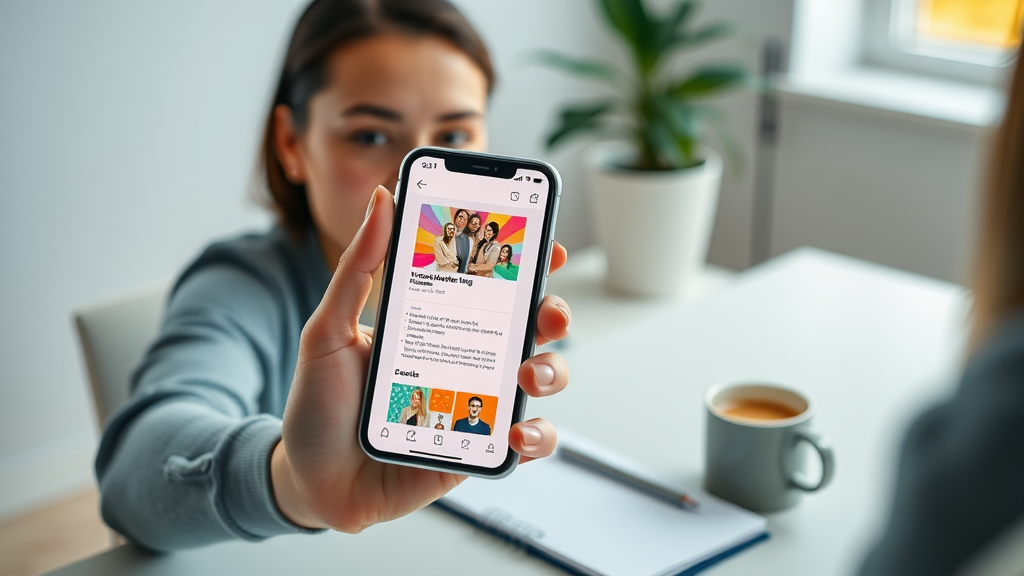Did you know that a single, well-crafted email marketing campaign can generate 4.24% conversion rates , outperforming both search engines and social media? If you’re searching for ways to drive sales instantly, strategic email marketing may just be your brand’s secret weapon. In this comprehensive guide, you’ll uncover actionable strategies, winning templates, and expert insights—everything you need to build effective email marketing campaigns that deliver immediate results.
- Understand why email marketing outperforms other digital channels
- Explore characteristics of high-converting campaigns
- Access a list of proven email campaign ideas
- Master subject line and copywriting best practices
- Leverage automation, templates, and multi-channel integration
- Find expert tools and answers to common questions
Why Email Marketing Campaigns Outperform Other Digital Strategies
When it comes to immediate sales, email marketing campaigns have a proven edge. According to recent data, 4.24% of visitors from email marketing campaigns make a purchase , compared with just 2.49% from search engines and a mere 0.59% from social media. This makes email marketing not only a highly effective channel for e-commerce brands but also a critical tool for any marketing strategy that prioritizes ROI and measurable results.
In fact, “ Email marketing campaigns can yield an ROI of $42 for every $1 spent. ” – Data & Marketing Association. Such impressive returns highlight why marketers continue to prioritize email, integrating it seamlessly into their broader marketing campaigns . The secret to this impact lies in email’s ability to deliver targeted, personal messages directly to subscribers’ inboxes—cutting through digital noise and fostering real engagement.

How Effective Email Marketing Campaigns Drive Sales Fast
- Conversion rates: Email campaigns consistently deliver higher conversion rates due to their personalized approach and direct contact with subscribers.
- Direct communication: Unlike social media , emails are sent straight to a user's inbox, making it easier to grab attention and initiate immediate action.
- Segmentation and personalization: Successful email marketing campaigns use segmentation and personalized content, leading to better engagement and open rates .
- Automated triggers: Timely, automated emails—like cart abandonment triggers—respond to user behavior, turning intent into fast sales.
By combining segmentation, personalization, and automation, modern email marketing campaigns become powerful engines for both retaining customers and converting new leads. Each campaign can be precisely tailored for a segment or even an individual, making each touchpoint more relevant and more likely to result in a sale.
The Psychology Behind Successful Email Campaigns
- The impact of personalized marketing emails: Readers are more likely to engage with emails that use their name, recall their preferences, or reflect recent browsing or purchases. This emotional connection increases loyalty and customer lifetime value.
- Subject line science for higher opening rates: Research shows that subject lines evoking curiosity or urgency lead to better open rates . Combining personalization with compelling language captures attention, encourages clicks, and strengthens your marketing strategy .
Understanding consumer psychology transforms email marketing campaigns from routine blasts into engaging conversations. Factors like word choice, timing, and visual cues can make a huge difference—turning a standard email into a high-performing marketing tool that builds brand awareness and loyalty.
Characteristics of High-Converting Email Marketing Campaigns
- Compelling subject line: A powerful subject line is the gateway to higher open rates . Incorporate curiosity, urgency, or a clear benefit.
- Personalized content: Use data to craft messages tailored to the recipient, including names, preferences, and past purchases.
- Clear call-to-action (CTA): Guide your readers toward a single, focused action—whether it’s shopping a flash sale, leaving feedback, or attending an event.
- Mobile-responsive email template: With a majority of consumers checking emails on mobile devices, your email templates must render perfectly on all screen sizes.
- A/B tested elements: Regularly test subject lines, layouts, and copy to discover what resonates best with your audience for ongoing improvement.
Applying these traits ensures your email marketing campaign stands out in crowded inboxes and compels your audience to act. High-converting emails are visually clean, skimmable, and designed with the user experience in mind.

| Email Type | Average Open Rate | Average Click-Through Rate |
|---|---|---|
| Personalized Marketing Emails | 26.8% | 3.4% |
| Generic (Non-Personalized) Emails | 16.7% | 1.1% |
Email Copywriting That Sells: Winning the Inbox War
- Persuasive storytelling: Use customer stories, brand journeys, or relatable challenges to encourage emotional investment and connect with your subscribers.
- Effective use of urgency: Phrases like “Last chance!” or “Offer ends today” trigger FOMO (fear of missing out), which can sharply increase response rates in your email campaign.
- Concise, actionable copy: Articulate benefits clearly, break up text with bullet points, and drive action with well-positioned, unmistakable calls to action throughout your message.
The most effective email copy is focused yet friendly. Avoid jargon. Instead, anticipate questions, reassure, and always highlight the main advantage your marketing email offers—this style is crucial for any successful email marketing campaign .
Top 15 Email Marketing Campaigns That Drove Immediate Sales Results
- Welcome series email marketing campaign: Greet new subscribers, set expectations, and introduce your value. This first impression can solidify lasting relationships and improve open rates .
- Abandoned cart email campaigns: Recover lost sales by reminding users of items left in their cart, often with a time-limited discount code or incentive.
- Product launch campaign: Announce new arrivals, highlighting features and offering exclusive early-access to your mailing list .
- Seasonal promotion campaigns: Tap into holidays with themed offers and unique calls to action, creating urgency and excitement.
- Customer re-engagement campaigns: Wake up dormant subscribers with personalized incentives or updates, aiming to rekindle interest.
- Post-purchase follow-up campaigns: Confirm order, suggest related items, or request feedback, building trust and encouraging up-sells.
- Birthday/Anniversary special email campaign: Celebrate important events with exclusive offers, fostering loyalty and higher customer lifetime value.
- Referral campaigns: Reward existing customers for bringing in new leads, maximized by clear instructions and attractive bonuses.
- VIP/Loyalty program announcements: Reveal perks, early-bird access, or personalized recommendations to nurture your most valuable segment.
- Flash sale email marketing campaigns: Drive immediate action with limited-time discounts and eye-catching visuals.
- Feedback and review requests: Ask for product reviews, testimonials, or survey participation to generate user-generated content and insights.
- Cross-sell and up-sell email campaigns: Suggest complementary or upgraded products based on past purchases, leveraging data-driven recommendations.
- Replenishment reminder campaigns: For consumables, timely reminders help secure repeat purchases before the customer runs out.
- Event invitation campaigns: Promote webinars, live events, or product launches to increase attendance and engagement.
- Social proof/testimonial-focused campaigns: Featuring real customer experiences and winner stories reduces purchase friction and builds brand awareness .
Email Marketing Campaign Case Study: Abandoned Cart Recovery
“Our abandoned cart email marketing campaign boosted recoveries by 20% within two days.” – E-commerce Retailer
One of the most powerful email campaigns in e-commerce is the abandoned cart sequence. By triggering an email shortly after a customer leaves items in their cart, brands can remind, persuade, and often incentivize a return purchase. The key is a mix of persuasive email copy , personalized product recommendations, and a clear call to action . Top-performing examples may include a customer’s name, details about the product left behind, and even a one-time-use discount code for extra motivation.
Data shows that automated cart recovery email marketing campaigns can recover as much as 20%-30% of abandoned carts. Companies that automate and A/B test these marketing campaigns continue to see significant, measurable increases in sales, making them a non-negotiable for any serious e-commerce marketing strategy .

The Role of Subject Lines in Winning Email Marketing Campaigns
A strong subject line can make or break your email marketing campaign . With crowded inboxes, your challenge is to grab attention in a single, compelling line. The best subject lines spark curiosity, build urgency, or offer a clear benefit—always tailored for your target audience. Remember, open rates hinge on this first impression, so invest time in crafting and testing various options.
Subject Line Best Practices for Higher Open Rates
- Keep subject lines under 50 characters for optimal mobile viewing
- Use actionable verbs to prompt engagement (e.g., “Unlock,” “Discover,” “Claim”)
- Personalize with the recipient's first name to boost relevance and open rate
- A/B test subject line variations to refine your approach based on data
Applying these best practices to your email campaigns not only improves open rates but sets the tone for the rest of your marketing email . Make sure your subject line aligns tightly with your message and offer for consistent, trustworthy experiences.
| Subject Line Type | Average Open Rate |
|---|---|
| Successful, Personalized Subject Lines | 29.3% |
| Generic, Non-Personalized Subject Lines | 16.1% |
Real Examples: Subject Lines That Drove Massive Engagement
Here are real-world subject lines from high-performing email marketing campaigns :
- “John, your exclusive offer is inside!” – Personalization increases the open rate by signaling unique value.
- “Only 3 hours left for your 20% off” – Urgency and specificity prompt immediate action.
- “Just Landed: Summer Essentials You’ll Love” – Highlights new products and builds intrigue.
- “We saved your cart for you 😊” – A friendly touch to rekindle lost conversions.
Must-Have Email Templates for High-Performance Email Marketing Campaigns
- Welcome email templates for onboarding new subscribers and delivering instant value
- Promotion email templates tailored for announcements, discounts, and product launches
- Cart abandonment email templates for reclaiming lost sales and increasing revenue
- Event invitation email templates to maximize attendance and excitement
Each email template serves a crucial role in the marketing funnel. Consistently using best-practice templates improves speed, coherence, and overall campaign effectiveness. Whenever possible, customize templates to match your audience’s preferences and your brand’s voice.
Designing Email Templates for Mobile and Desktop
- Responsive design principles: Ensure every email template adapts seamlessly, regardless of device or inbox provider.
- Ensuring accessibility and clarity: Use legible fonts, clear contrast, and structured layouts—making your emails readable for everyone, including those using screen readers.
- Incorporating effective CTAs: Highlight a single, persuasive call to action. Use contrasting buttons and concise text such as “Buy Now” or “Reserve Your Spot.”
With more than 50% of emails read on mobile, responsive and accessible design isn’t optional—it’s essential. A poor mobile experience could undercut even the most creative email marketing campaign , so always preview and test before launch.

Email Automation: The Secret Engine of Successful Email Campaigns
Automation turbocharges your email marketing campaigns , ensuring every message hits the right inbox at the right moment. By deploying trigger-based flows, you can respond to subscriber behaviors or key events instantly, driving higher conversions without manual effort. Automated campaigns also provide rich data to optimize your marketing strategy over time.
Trigger-Based Email Marketing Campaigns for Instant Results
- Behavioral triggers: Respond to actions like browsing products, leaving a cart, or downloading a guide to send highly relevant follow-ups.
- Time-based campaigns: Automate recurring communications such as birthday greetings, anniversaries, or subscription renewals for ongoing, consistent engagement.
- Personalization through automation: Let software dynamically adjust your message based on purchase history, location, or demographic data for enhanced relevance.
Trigger-based automation transforms average email campaigns into profit-boosting systems. For example, setting up an abandoned cart sequence or post-purchase journey ensures your brand stays top-of-mind and maximizes lifetime customer value .
Maintaining Consistency in Your Email Marketing Strategy
- Scheduling best practices: Choose send times based on audience activity and campaign goals; consistency builds trust and expectation.
- Analytics and performance tracking: Monitor key metrics like open rates , click-throughs, and conversions to continually refine your approach.
A consistent cadence and commitment to analytics underpin every successful email marketing campaign . Without it, brands risk either spamming their email subscribers or fading into inbox oblivion. Continually testing and measuring campaign elements ensures growth and adaptability in your overall marketing strategy .

Integrating Email Marketing Campaigns with Social Media and Multi-Channel Marketing
For a truly robust marketing strategy , email must work in harmony with social media and other channels. Multi-channel integration streamlines messaging, expands reach, and multiplies engagement opportunities—often at a lower cost than relying on a single platform. Brands have discovered that leveraging the strengths of each channel significantly amplifies the ROI of every marketing campaign .
Amplifying the Impact of Email Campaigns with Social Media
- Cross-channel promotions: Use a coordinated approach, such as launching a new product both via email and on your social media channels, for maximum exposure and response.
- Retargeting strategies: Sync your email list with social media ads for retargeting—reaching customers who didn’t convert via email but may respond to a visual ad or sponsored post.
“A cohesive marketing campaign that blends email and social media outperforms single-channel efforts.” – Growth Marketer
Synergizing email marketing campaigns with social media and website traffic not only increases conversions but also accelerates your brand-building efforts. Multi-channel marketing maximizes touches and helps guide subscribers along the buyer’s journey.
What Are Email Marketing Campaigns?
Answer: Email marketing campaigns are strategic, targeted communications sent to segments of an email list with the intent to achieve a clear marketing objective, such as increasing sales or nurturing customer relationships.
Whether you’re launching a product email campaign , re-engaging lapsed buyers, or sending out helpful content, every email marketing campaign should serve a concrete purpose—moving the recipient toward a defined action while strengthening brand loyalty.
What Is the Best Email Marketing Campaign?
Answer: The best email marketing campaign leverages personalization, automation, and timely relevance—often, a well-optimized abandoned cart recovery or welcome series produces the strongest ROI due to immediate customer intent and interest.
Not all marketing campaigns are created equal. Automated, behavior-driven emails consistently outperform batch-and-blast methods by speaking directly to a user’s recent actions or interests, yielding quick returns.

What Are the 5 T’s of Email Marketing?
Answer: The 5 T's of email marketing are: Target, Tease (intrigue), Teach (add value), Test (A/B testing), and Track (analyze performance to optimize future campaigns).
Memorize these pillars to build stronger, more intentional email marketing campaigns . Each step—from audience segmentation (target) to ongoing analytics and improvement (track)—is critical for consistent success.
What Is the Rule of 7 in Email Marketing?
Answer: The Rule of 7 in email marketing refers to the concept that a potential customer needs to encounter the marketing message at least seven times before taking action, emphasizing the need for consistent communication.
Persistence pays off; repeated, strategic touchpoints deepen recognition and trust. This rule reminds marketers to plan ongoing sequences, not just one-off emails.
Essential Tools for Managing and Optimizing Email Marketing Campaigns
- Email service providers (e.g., Mailchimp, ActiveCampaign, ConvertKit) enable automation, analytics, and list segmentation
- Analytics dashboards reveal engagement trends and uncover optimization opportunities
- Design and testing tools help build beautiful, effective email templates and perfect your marketing emails
Choosing the right tools for your business scale and goals is paramount. Reliability, integration options, and user-friendliness should factor into your decision, ensuring every email campaign is as effective and efficient as possible.
How to Choose the Right Email Marketing Platform
Start by listing your must-haves: automation capabilities, robust analytics, template libraries, and integration support for your existing tech stack. Prioritize platforms that allow personalization at scale and provide A/B testing tools so you can continually refine your email marketing strategy . Read reviews, start with a demo, and confirm support and deliverability performance before committing.
Video Tutorial Available: Walkthrough: Setting Up a High-Converting Email Marketing Campaign
Expert Tips for Successful Email Marketing Campaigns
- Personalize emails beyond just the name (use interests, behaviors, and location for relevance)
- Optimize send times based on your list’s past engagement patterns
- Segment your email list to deliver content people actually want
- Continually test and refine your email copy , subject lines, and design
“Segmentation and relevant content are the backbone of successful email marketing.” – Email Marketing Strategist
Embracing these best practices will help you consistently outperform your competition and ensure your marketing campaigns are truly high-converting and customer-centric.
Frequently Asked Questions About Email Marketing Campaigns
- Q: How often should I send email campaigns? A: Frequency should align with user engagement and content relevance, generally 1–4 times per month for most businesses.
- Q: What metrics matter most in evaluating a marketing campaign? A: Open rates, click-through rates, conversion rates, and list growth are primary KPIs.
- Q: Can I use email campaigns for B2B and B2C companies? A: Yes; strategies may differ but email marketing is valuable for both.
Take Action: Supercharge Your Sales with Proven Email Marketing Campaigns
- Start implementing winning strategies from the list above
- Download our guide to optimizing subject lines
- Subscribe for more expert-driven marketing insights
Ready to grow? Apply these expert-backed email marketing campaigns now to accelerate your sales, connect with your audience, and outshine your competition!
 Add Row
Add Row  Add
Add 




Write A Comment